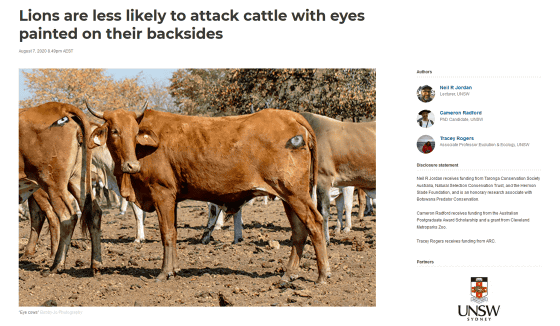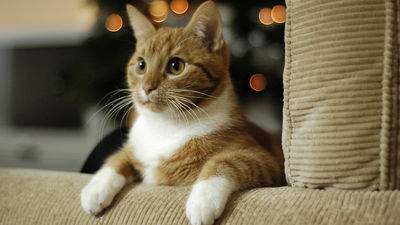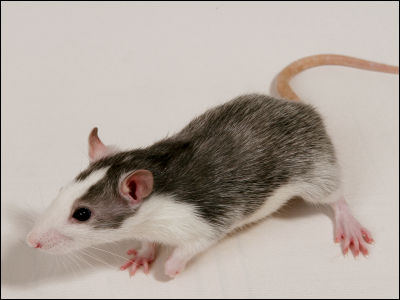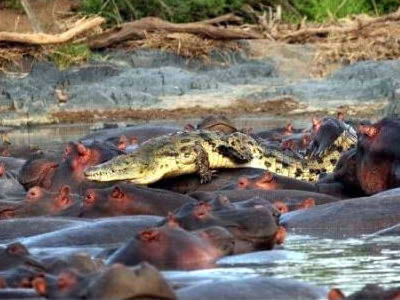Experimental result that lion can not eat when drawing 'eyes' on bovine ass

Livestock farming, which raises and grazes livestock and ships dairy products and meat, is performed all over the world. Is also a problem. A research team
Artificial eyespots on cattle reduce predation by large carnivores | Communications Biology
https://www.nature.com/articles/s42003-020-01156-0
Lions are less likely to attack cattle with eyes painted on their backsides
https://theconversation.com/lions-are-less-likely-to-attack-cattle-with-eyes-painted-on-their-backsides-142488

Predation of livestock by carnivores not only threatens the livestock industry's lives, but also leads to the killing of carnivorous animals by the livestock industry, leading to a decrease in the population of lions and other animals. Conflicts between livestock farmers and wild animals have become the most intense around animal reserves in Africa and other areas, and livestock farmers are burdened with the cost of coexisting with wild animals.
Most existing approaches to livestock protection include fences around the grazing area to keep carnivores out of reach, or non-lethal ways to keep them away. However, because this method is not always feasible and expensive, it is difficult for livestock farmers in developing countries to introduce it, and an alternative method is desired.
In the world natural heritage

by
According to the research team, most of the livestock predation in Okavango Delta is done by lions. The livestock industry sleeps a herd of about 6 to 100 livestock in the fence at night, but grazing outside the fence during the day. Most of the predation by carnivores is done during daytime grazing.
The main livestock-eating carnivores, lions, leopards and tigers, are “ambushes” predators, and may even give up hunting if their prey is noticed before the hunt begins. The research team used this behavior and thought that 'drawing the mark of 'eye' on the buttocks of livestock' would alert predators who ambush, and reduce the risk of predation of livestock ..
The research team examined 14 herds of cattle that had been attacked by a herd of lions to see if the 'eye mark' on the buttocks reduced the risk of predation. The research team drew a 'eye mark' on the buttocks on one-third of the target cattle, a 'cross mark' on one-third, and the remaining one-third It was said that they let them graze as usual without drawing any marks.
The following image is the mark actually drawn on the cow's buttocks. (a) is a 'eye mark', (b) is a 'cross mark', and (c) is a cow without any marks.

As a result of conducting experiments on a total of 2061 cows over four years, all 683 cows with 'eye marks' drawn on their buttocks were not eaten during the period. On the other hand, 15 out of 835 cows without any marks were eaten and 4 out of 543 cows with 'cross mark' were eaten.
All cattle were grazing in the same area and there was no difference in risk of exposure to wildlife, revealing that cattle with'eye marks' were clearly less predatory than other cattle. The research team said. This result supports the hypothesis that 'predators can abandon hunting by recognizing that the prey is looking at them,' but a simple 'cross mark' It was unexpected for the research team that the prey rate decreased even for cattle drawn on the buttocks.
In addition, in this experiment, there were always 'cattle with eye marks', 'cattle with cross marks', and 'cattle with no marks' in the herd. It's unclear what happens if you draw an 'eye mark' on the cow. However, the current results alone suggest that it is possible to reduce the risk of eating more than other low-value livestock by drawing 'eye marks' only on the high-value livestock in the herd.
However, if you continue to use the same approach for a long time, there is a possibility that 'predators will get used to the 'eye mark''. This is a problem that accompanies all non-lethal approaches, and it is unknown whether the method using the 'eye mark' will be effective in the long run.
The research team pointed out that a single approach is unlikely to solve all the problems, but a simple and low-cost approach of 'creating an 'eye mark' on the ass of livestock' puts a burden on the livestock industry. He said he hopes to reduce some.

by Bobby-Jo
Related Posts:







